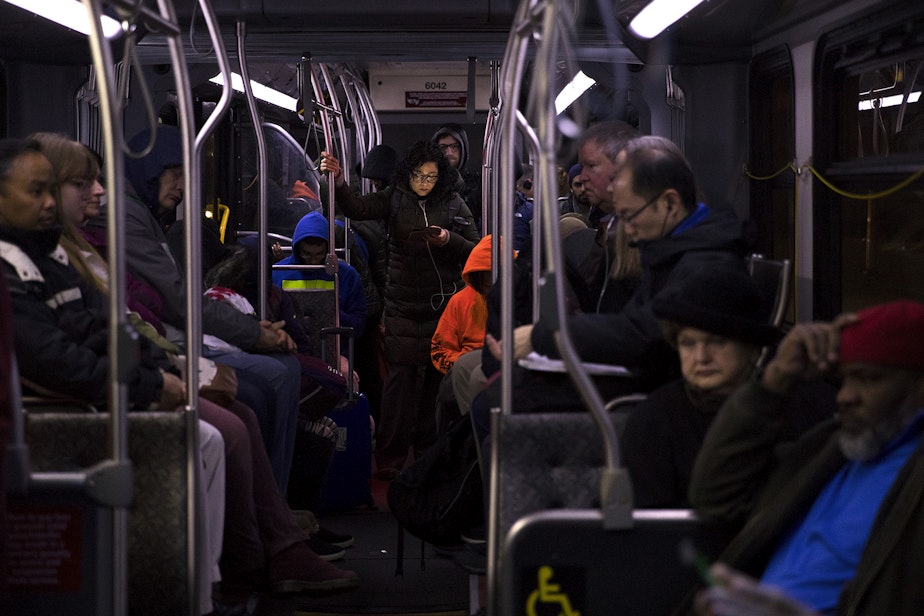There's meth on that: Study finds drug traces on Seattle transit rides

Methamphetamine and fentanyl are lurking on bus and train surfaces throughout Seattle and Portland, a recent study by University of Washington researchers found. The study, which looked at possible secondhand drug exposure on public transit, also found the drugs in the air of those vehicles.
Health experts said the levels were too low for the drugs to have acute health effects for riders, but the study's authors were still concerned about the potential physical and mental health effects of transit operators' workplace exposure to secondhand smoke, and drug use.
"I continue to use transit, and I don't take any additional precautions," said Marissa Baker, an environmental health professor who helped lead the study. "I continue to feel safe on buses and trains."
RELATED: 'It is not OK,' Seattle union leader responds to transit drug study
The study aimed to assess drug exposure risks for transit operators in particular, who spend their shifts confined in the vehicles, but it also looked at what transit riders would experience.
The researchers placed air sensors at various locations in buses and trains at the beginning of an operator’s shift, and then took them down for sampling at the end. They intentionally chose routes and times that had previous complaints of drug use.
Sponsored
There was meth on every surface the researchers tested, and in almost all the air samples.
And there was fentanyl on most of the surfaces, and in about a quarter of the air samples.
Baker said there are often no established state or federal standards for levels of exposure to fentanyl and methamphetamine. Washington does have a standard for decontaminating surfaces at methamphetamine production sites, but nothing for public places like transit. Two of the surface samples from buses (collected inside the filter housing of the ventilation system) exceeded that standard.
The study only tested for the presence of drugs in the environment — it didn’t look at blood, urine, or any other biological markers that would show if people were absorbing the drugs, and if so, at what levels.
That said, “the quantity of the drugs found in the study are too small to be a risk for riders and employees,” said Rob Hendrickson, a doctor specializing in clinical toxicology. “In most cases, an exposure would be hundreds to thousands of times lower than what we would expect to cause clinical effects.”
Sponsored
In cases where transit operators got headaches or started coughing after someone did drugs on a bus or train, it was likely the result of breathing in secondhand smoke — not exposure to the drugs themselves, Hendrickson said.
Nonetheless, the researchers recommended that public transit vehicles upgrade their filtration systems to a MERV 13 rating or higher; clean more regularly and thoroughly; and offer mental health support to operators, who may be uncomfortable or upset when they see people doing drugs or when they're exposed to secondhand smoke.
King County Metro and other area transit agencies said they’re upgrading their air filters and cleaning procedures, and adding new mental health supports for operators. Additionally, Sound Transit said they now have more security guards to ask people doing drugs to leave.
The study's detailed findings include:
- 25% of air samples (20 out of the total 78) contained fentanyl.
- 100% of the air samples contained methamphetamine.
Sponsored
Researchers also collected 13 samples from surfaces without cleaning them first. Of those samples,
- 77% (10) contained fentanyl.
- 100% contained methamphetamine.
In a second set of surface samples, researchers first cleaned the surface. Then they waited for the duration of an operator’s shift before collecting a sample for testing. Of those samples:
- 42% (37 of the 89 samples) contained fentanyl.
- 98% (87 of the 89 samples) contained methamphetamine.
9/11/23: This story has been updated to reflect researchers' concerns about physical and mental health effects of secondhand smoke to transit operators.





